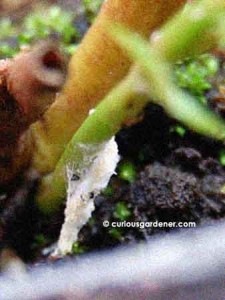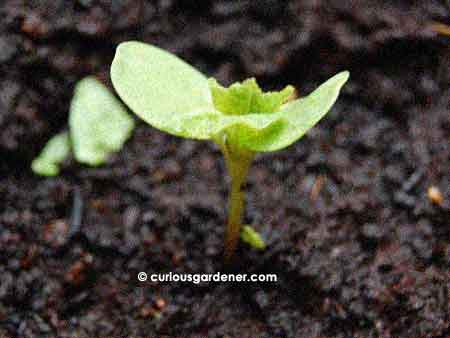I have a horrible track record when it comes to growing leafy vegetables. Somehow or other, the poor plants die of neglect, don’t have the right growing conditions or are attacked by pests or disease (not in any particular order). My kangkong, however, looked to be my first leafy veggie success. They had been growing in a planter and hanging in individual bottle-pots, growing quite prolifically. They looked very impressive, if I say so myself. All was going well and I was looking forward to a decent harvest.
And then the whiteflies arrived. I tried to control them by cleaning the eggs off the leaves by hand, but there were too many leaves, and too many pests. Eventually, I stalked off in frustration and ignored the plants, and they began to die from the pests feeding on the leaves and lack of watering.
I thought that would be the end, but with the rainy weather we’ve been having, the plants got some moisture, they didn’t have any more to offer to the pests, and left alone, they miraculously survived. No doubt the stems were mostly withered, but new leaves started budding along the existing greener stems, and new stems began growing from the main stem. So I considered my options…
-
Firstly, these plants were probably not very healthy any more. Were they worth reviving or should I just start a new batch?
- The plants were also very root bound in the bottle-pots, even though I used as much of the height of the bottles that I could to give the roots more space to grow. Obviously they still need more space…
Being curious, I thought I’d work with what I had and see what happened. The plants seemed anxious to grow, and responded well to some CPR/TLC.
But then the pests returned. Not just whiteflies but also fluffy, plump mealy bugs that clustered on the stems. So, as with the tomato plants, I decided to remove the food for pests, and unhappily got rid of the most infected kangkong plants, which was about 85% of them. I am stubbornly determined to see how far I can get with growing this plant. At least I know now that they’re tough, can bide their time and keep on growing. Now, if I could only figure a way to deter pests…
© 2011 curiousgardener.com All rights reserved.










